Presidents Through History
In 1908 slightly over 42 acres of farmland fronted on Harrisonburg’s South Main Street. The land was marked by a gradual rise that crested a hill to the east. Observers noted that any school built on the site would be in full view of the surrounding area, its turnpike and railroads. It was the spot chosen to build the State Normal and Industrial School for Women at Harrisonburg—a school that, a century later, would be known as James Madison University and recognized as one of the top universities in the country.
How do you go from an open field to an institution with award-winning programs, faculty and students? What happened in Harrisonburg would not have been possible without the men appointed to lead the institution, each possessed of his own unique blend of traits that proved to be the right thing at the right time. And common to all were the gifts of purpose, imagination, drive and vision.
Be sure to check out the extended version of this article in Madison Magazine, coming spring 2013.
Burruss (1908-1919)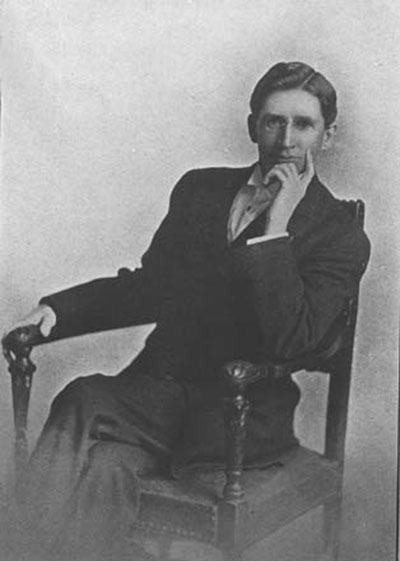
Former President, Julian Burruss It was his visionary skill that Julian Burruss put in immediate use when he was appointed as president of an educational institution yet to be built. Frequently urging that “the school should be planned for the future as well as for the present,” Burruss worked in tandem with architect Charles Robinson. The blueprint for the new institution was in fact a detailed plan for the future. Historians note that the phrase “the next twenty-five years,” was in frequent use in 1908 when Burruss began his tenure as president of the State Normal and Industrial School for Women at Harrisonburg. His vision for the future was not just for the stone and mortar of the new school. Burruss was consumed with purpose for the school’s students, for what their education would mean. The school should “teach its students to do as well as to think.” The value of the students’ knowledge would be found in application in real life. Burruss had begun with the unknown, the undeveloped and untried; when he left office in 1919 the school was an institution respected throughout the state with a 49-acre campus and six buildings. |
Duke (1919-1949)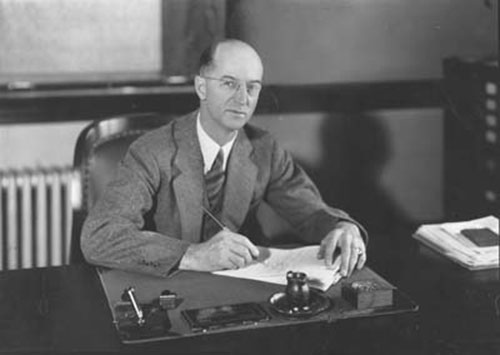
Former President, Samuel Duke Samuel Duke, the school’s second president, immediately applied his enthusiasm to fulfill his own vision for the school—continued growth. He proved particularly adept at bringing hopes to reality, employing a creative gift for fundraising so adeptly as he addressed the capital needs of the school that he earned two monikers— “Builder” and “financial wizard.” His tenure from 1919-1949 saw world war and the Great Depression, yet Duke stayed focused on his purpose that the needs of students and faculty should be adequately met. The results were undeniable. During his presidency, as nine major campus buildings were constructed, enrollment quadrupled. His administrative genius brought the school a changing future. By the end of his presidency, the institution had seen conversion from normal school to teachers college to Madison College, a liberal arts institution. It was a name Duke had argued for, pointing out that no other college honored President James Madison, an early champion of higher education. |
Miller (1949-1971)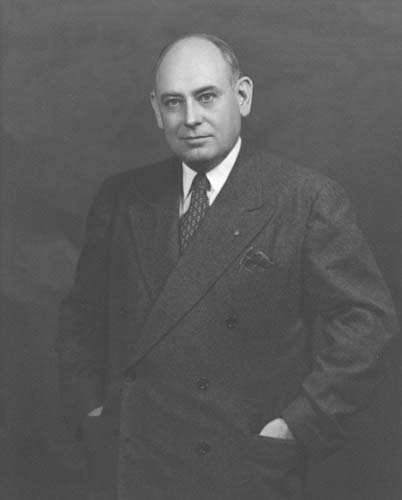
Former President, G. Tyler Miller In 1949, G. Tyler Miller brought Madison College the right vision at the right time. When Miller was appointed as president, he already had a reputation as a strong advocate for the teaching profession who had conceived important and critical changes in the state’s educational system. He was well fit to guide Madison College in fulfilling the need for teachers in a postwar baby boom society. But he went beyond. His administration revamped the institution’s curriculum, developing a full liberal arts program to join the teacher education program. In 1954, the expanding school began to award master’s degrees. He won approval to build residence halls for men, so the college could become fully coeducational. While his vision went beyond stone and mortar, his foresight to buy land for the campus would prove significant to the school’s future. In addition to the construction of 19 major buildings, Miller enlarged the institution’s campus by 240 acres. That land would give the institution growing room—room that would be used to expand into a full-fledged coeducational institution and then a university. |
Carrier (1971-1998)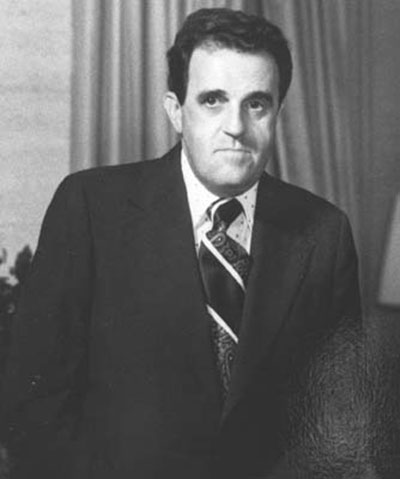
Former President, Ronald Carrier Madison’s fourth president, Ronald E. Carrier, came to campus in 1971. It was a time of societal change, and time for change on campus, a time for Madison to expand into a different type of institution. Carrier demonstrated a canny ability to bring what was needed, when it was needed. There was no regional, residential university in the state’s system of public higher education. Carrier seized the opportunity. His efforts brought name recognition, diversity, expanded curriculum—and football. Beyond expanding acreage, adding buildings and increasing enrollment on an aggressive scale, the transformation gave birth to a comprehensive, regional, coeducational institution of distinction, James Madison University. |
Rose (1998-2012)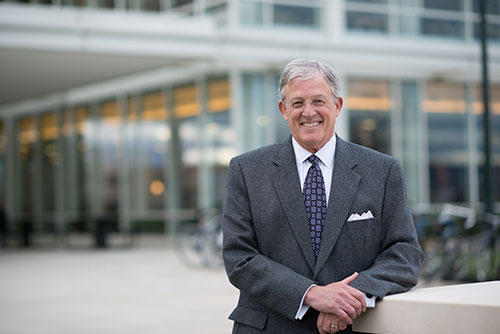
Former President, Linwood Rose In 1998, Linwood Rose took office as the institution’s fifth president convinced that the university offered the best features of a liberal arts college and a research university. Rose committed his presidency to the well-rounded educational experience. He had spent his career at JMU and had a firm belief in “the magic” great teachers work with students. Rather than making increased enrollment a goal, and despite a tenure that would see continued expansion including the construction of the Forbes Center for the Performing Arts, Rose wanted, and achieved, a climate that allowed “faculty members to flourish…and alter the lives of [their] students.” The result was graduates who were engaged, enlightened citizens. |
Alger (2012)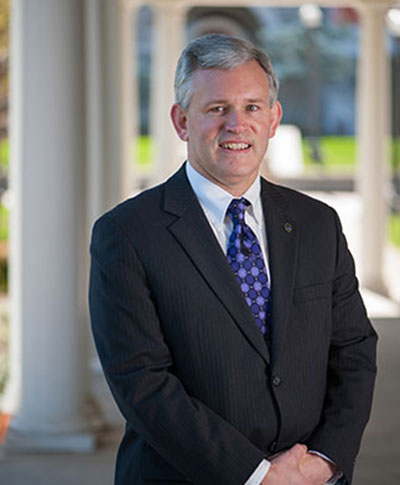
President Jonathan R. Alger And time for change is here again. “This is a university that’s always asking, ‘What’s next?’” says Jonathan R. Alger, JMU’s sixth president. And, Alger brings a vision of his own. Now is the time to capitalize on Madison's distinct educational environment. It is a time to look at a new and different type of blueprint—a plan to establish JMU as the national model of the Engaged University, a place where knowledge, creativity, and critical thinking skills are put to use addressing the most pressing challenges of our society and our world. |
